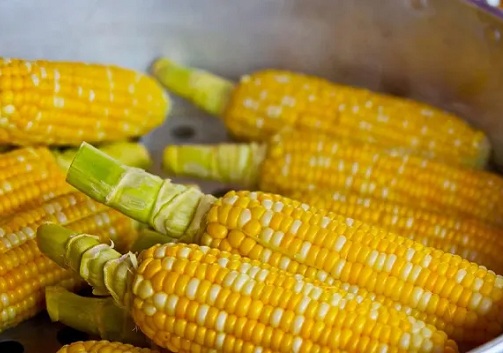SunSirs: China Corn Market Declined weakly, with a Decline of over 6% in the First Quarter of 2024
April 07 2024 13:25:09 SunSirs (Selena)
According to the commodity market analysis system of SunSirs, in the first quarter, bearish sentiment was dominant, and the rebound in the feed raw material market was weak. The feed index as a whole fell, oscillating and falling by more than 6%. On March 31, the feed raw materials were 988 points, unchanged from yesterday, a decrease of 27.19% from the highest point in the cycle of 1,357 points (2022-11-10), and an increase of 32.26% from the lowest point of 747 points on April 10, 2016. (Note: The cycle refers to 2014-03-01 present)
According to the price monitoring of SunSirs, there was one product that rose, four products that fell, and zero products that rose or fell on the feed raw material price list in the first quarter of 2024. The main commodities that have risen are: DDGS (1.98%); The main commodities falling include soybean meal (-12.01%), rapeseed meal (-8.47%), and corn (-6.49%).
In the first quarter, the stocking market of terminal feed manufacturers gradually ended, and demand significantly declined. From January to February, the feed raw material market experienced a comprehensive decline, and gradually improved in March. Due to the large decline in the early stage, the rebound in the later stage was weak. Except for the increase in DDGS products, corn, soybean meal, rapeseed meal, and wheat all fell, with the overall oscillation and decline in the feed raw material sector being the main trend. Among them, soybean meal led the decline, with a decline of over 12%; Rapeseed meal came second, with a decline of over 8%; Corn and wheat both fell by more than 5%, while DDGS rose alone, with an increase of 1.98%.
The corn market declined weakly in the first quarter, with a decline of over 6%. Starting from January, the domestic corn delivery volume has increased, the market supply has been loose, and prices have continued to decline weakly, with a decline of nearly 6%. Entering February, ports and deep processing enterprises slightly increased prices to replenish inventory, driving the domestic corn market price to stop falling and slightly rebound. After March, as the temperature gradually rose and the listing process of lying grain in production areas accelerated, the willingness of grain traders to leave the warehouse continued to increase, and the domestic corn market supply continued to rebound. After the corn inventory of deep processing enterprises was effectively replenished, the corn purchase price was lowered. From February to March, the corn market was mainly weak and oscillating, with an overall decline of less than 1%.
Agricultural product analysts from SunSirs believe that the main reason for the overall significant decline in feed raw materials in the first quarter is the loose supply of raw materials and poor terminal demand from January to February. After March, the demand for terminal feed has gradually recovered, and the overall feed raw material market has rebounded, with a smaller rebound than the decline, and oscillating decline is the main trend.
In the second quarter, demand side: Aquatic feed aquaculture has entered the peak season, and the rigid demand for terminal feed has increased. In addition, the low inventory of feed factories has led to a gradual rebound in the purchase of feed raw materials. In terms of demand, it is still mainly bullish. Supply side: South American soybeans are gradually being launched, and the import volume of corn and soybeans to Hong Kong is increasing. The pressure on raw material supply is still ongoing. Futures: During the South American soybean harvest season, the US soybeans will enter the planting period, and the external futures market will still be constrained by weather themes, with still room for growth. Long and short intertwined, the feed raw material sector may experience an upward trend in the second quarter, and the upward trend is expected.
If you have any questions, please feel free to contact SunSirs with support@sunsirs.com.
- 2024-04-29 SunSirs: China Corn Prices Remained Stable with a Weak Trend Last Week (April 22-26)
- 2024-04-24 SunSirs: China Corn Prices Continued to be Weak Last Week (April 15-19)
- 2024-04-16 SunSirs: China Corn Prices Fluctuated weakly Last Week (April 8-12)
- 2024-03-26 SunSirs: China Corn Prices Fluctuated and Moved forward Last Week (March 18-22)
- 2024-03-19 SunSirs: China Corn Prices Fluctuated slightly and Moved forwardLast Week (March 11-15)



